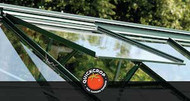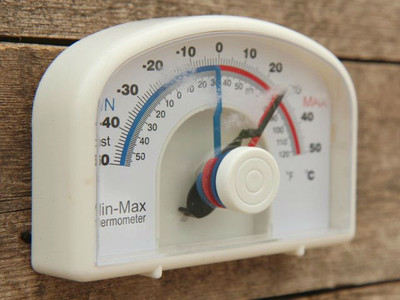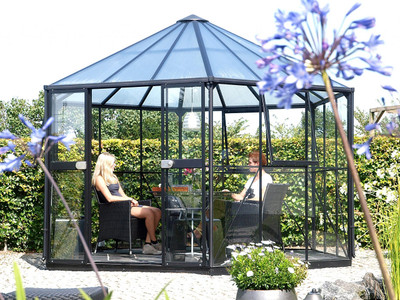Should you open your greenhouse every day?

Greenhouses are designed to draw in and capture heat. This is for the benefit of your plants, but it’s a blessing that can soon turn into a curse if you allow temperatures to get out of control. Should you be opening your greenhouse every day? In summer and in the warmer days of spring and autumn, yes. But how much ventilation you should provide can differ with the seasons and weather conditions. Sometimes propping vents slightly open for a couple of hours is the best answer. At other times you will want to vent the structure as much as possible, including leaving the door wide open.
The common mathematical way of looking at ventilation in the greenhouse is dividing your total floor area by 5. That 20% is the minimum amount of the structure that should have some kind of ‘open/close’ function. For smaller, more compact greenhouses this percentage can be even higher. It’s essential to have at minimum a roof vent and a side vent - preferably side vents on each side of the structure. Without this level of ventilation you’re going to really struggle to keep your plants and crops intact during the hotter summer periods.
Temperature
The ideal greenhouse temperature range is between 80-85°F. On a warm summer day temperatures can easily rise much higher, and ventilation is the key weapon in your arsenal when it comes to avoiding this. The high temperatures can kill plants or cause heat stress. They also create a breeding ground for mould and viruses. On sunny days you should open all vents and doors. Leave them open through the night if the temperature remains high. Even all this will likely not be enough: ventilation isn’t a ‘cure-all’ in the warmest conditions. It should be used in combination with other cooling methods like damping down and shading.
At other times it might be less clear when your greenhouse is at risk of overheating. This is where technology comes in! Remote temperature monitors can be connected to your smartphone, showing you the temperature and humidity levels at any given time.
Air Circulation
Good airflow is crucial for healthy plant growth and photosynthesis. It also tackles excess humidity. Humidity in the greenhouse should be in and around the sweet spot of 80%. If the air is much more humid than this, you will end up with conditions that favour disease, mould and other problems. Greenhouse extractor fans are another option. They will keep air moving and prevent the formation of hot and cold air pockets. They can be pretty noisy, however, not to mention adding to your energy bills.
Roof and Side Vents
The roof vent is the most important outlet of all. Hot air rises in the greenhouse, so in the warmest and stuffiest conditions this is where your ventilation will have the strongest effect. Roof vents should typically open to about 55 degrees.
There are two main types of side vent: hinged and louvred. ‘Louvred’ refers to a certain style of vent which lets air in through a series of angled slats. It’s quite elegant and artistic-looking…for a vent, anyway. The downwards angle also has the bonus effect of discouraging pests and so on from entering the greenhouse. A hinged vent is generally considered to be less effective. Side vents should be ideally situated down low. This provides for good air circulation, with cooler air replacing hot air. Just be wary of cold draughts, as when these pass low over plant foliage they can cause some damage.
Winter Ventilation
You should continue to ventilate your greenhouse in the winter. The weather might be cooler but air in the greenhouse can still become stagnant and overly humid, potentially leading to mould and plant disease. Open the vents by about an inch or two for a couple of hours in the middle of the day. Avoid doing so during windy or very cold conditions. The importance of ventilation in wintertime increases if you’re using some kind of heater.
Auto Ventilation
Automatic ventilation is not as complex (or expensive for that matter) as it might sound. Auto vent openers can work with something as simple as a tube with a heat-expanding element. When the temperature reaches a certain point, the mechanism will prop open the vent. Similarly they will close again when the temperature falls sufficiently. Other vent openers are solar-powered. Relying on manual ventilation puts a lot of pressure on you to be on the ball when it comes to temperatures and crop care. Even a lie-in on a Saturday morning can be treacherous! So it’s definitely worth looking into automated options, and the technology gets better all the time.




